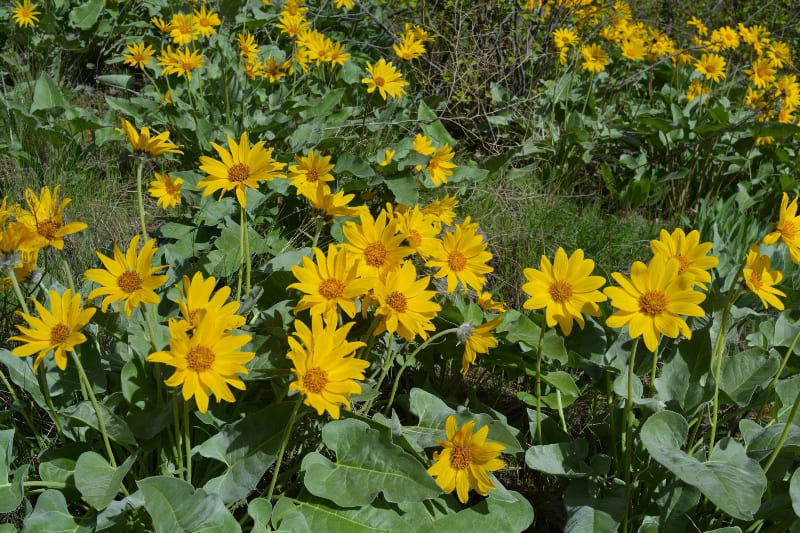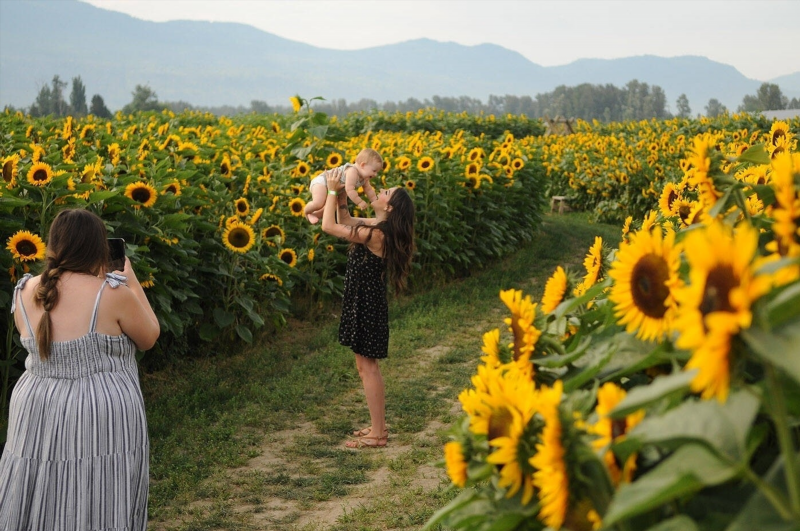Okanagan Sunflower: Nature’s Canvas in the Hills
The Okanagan Valley, a picturesque region in British Columbia, Canada, is renowned for its vibrant landscapes and diverse flora. Among these natural beauties, the Okanagan sunflower stands out as a radiant emblem of the region’s natural splendor. This flower, with its large, bright yellow petals and lush greenery, adorns the hills and valleys, painting a stunning picture that captivates locals and tourists alike.
The Aesthetic Appeal of the Okanagan Sunflower
Why does the Okanagan sunflower hold such a special place in the hearts of those who witness its beauty? The answer lies not only in its vivid color and size but also in the way it transforms the landscape. As the sun rises and sets, the Okanagan sunflower undergoes a mesmerizing transformation, its petals catching the light in a way that seems almost magical. This floral phenomenon adds a unique charm to the already picturesque Okanagan Valley.
Cultivation and Care: Secrets Behind Thriving Sunflowers
Growing Okanagan sunflowers is both an art and a science. The right balance of sunlight, water, and soil nutrients is crucial for these flowers to flourish. Gardeners and farmers in the Okanagan region have mastered this delicate balance, resulting in fields of sunflowers that seem to stretch endlessly, creating a breathtaking view against the backdrop of the Canadian hills.
The Okanagan Sunflower in Local Culture and Economy
In the Okanagan Valley, the sunflower is more than just a plant; it’s a symbol of the region’s cultural identity and a significant contributor to the local economy. The flower’s popularity has led to the development of various sunflower-themed festivals and events, drawing in crowds from far and wide. Moreover, sunflower-related products, like oils and seeds, have become staple items in local markets, showcasing the economic potential of this vibrant bloom.
Sunflower Festivals: A Celebration of Color and Community
Every year, the sunflower festivals in the Okanagan Valley are a highlight for residents and visitors. These events are not just about admiring the beauty of the flowers; they are a celebration of community, local art, and culture. The festivals often feature local artists, musicians, and food vendors, creating a lively atmosphere that encapsulates the spirit of the Okanagan.
Economic Impact: From Fields to Markets
The cultivation of Okanagan sunflowers has a tangible impact on the local economy. The sale of sunflower seeds and oil brings in significant revenue, supporting local farmers and businesses. Additionally, the tourism draw of the sunflower fields and festivals contributes to the overall economic health of the region, making the Okanagan sunflower a valuable asset beyond its aesthetic appeal.
Environmental and Ecological Significance of the Okanagan Sunflower
The Okanagan sunflower is not just a pretty face; it plays a crucial role in the local ecosystem. The flower is known for attracting bees, butterflies, and other pollinators, which are essential for the health of the environment. Moreover, the sunflower’s ability to thrive in diverse soil types makes it an important species for land rehabilitation and conservation efforts.
A Haven for Pollinators
The sunflower fields of the Okanagan Valley are buzzing with activity, literally. The flowers are a vital food source for bees and other pollinating insects, which are crucial for the pollination of many other plant species. By supporting a healthy population of pollinators, the Okanagan sunflower contributes to the overall ecological balance of the region.
Land Rehabilitation and Conservation Efforts
In areas where land degradation is a concern, the Okanagan sunflower has been used as a natural tool for rehabilitation. Its deep roots help to stabilize soil, while its foliage provides cover and nutrients as it decomposes. This makes the sunflower an ally in efforts to restore and conserve the natural landscape of the Okanagan Valley.
The Photogenic Okanagan Sunflower: A Photographer’s Paradise
For photographers, both amateur and professional, the Okanagan sunflower fields offer a canvas like no other. The contrast of the bright yellow petals against the blue Canadian sky, the way the flowers sway gently in the breeze, and the sheer scale of the fields provide endless opportunities for stunning photography.
Capturing the Beauty: Tips for Photographing Sunflowers
When it comes to photographing the Okanagan sunflower, timing and perspective are key. The golden hours of early morning and late afternoon offer the best natural lighting. Experimenting with angles and compositions can also yield unique and captivating images. Whether it’s a close-up of a single bloom or a wide shot of the entire field, each photograph tells a story of this remarkable flower.
Photography Contests and Exhibitions
The popularity of the Okanagan sunflower has given rise to photography contests and exhibitions, showcasing the best of sunflower photography. These events not only celebrate the beauty of the sunflower but also bring together photography enthusiasts, fostering a community of artists inspired by nature’s wonders.
Okanagan Sunflower: A Symbol of Hope and Joy
In many cultures, the sunflower is seen as a symbol of hope, happiness, and resilience. The Okanagan sunflower, with its towering presence and radiant blooms, embodies these qualities perfectly. Its ability to turn towards the sun, following the light throughout the day, serves as a metaphor for optimism and the pursuit of brighter days.
The Sunflower in Art and Literature
The image of the Okanagan sunflower has found its way into local art and literature, becoming a motif that represents the beauty and spirit of the region. Artists and writers draw inspiration from the flower, using it as a symbol of joy, growth, and the enduring beauty of nature.
Inspiring Community and Personal Growth
The presence of the Okanagan sunflower in the community serves as a reminder of the importance of positivity and resilience. Its ability to thrive in various conditions mirrors the human spirit’s capacity to overcome challenges. As a result, the sunflower has become a source of inspiration for personal growth and community unity.
Frequently Asked Questions
What Makes the Okanagan Sunflower Unique?
The Okanagan sunflower is unique due to its vibrant color, large size, and the role it plays in the local ecosystem and economy. Its ability to attract pollinators and its significance in local culture and festivals make it a standout species in the region.
How Can I Grow Okanagan Sunflowers in My Garden?
To grow Okanagan sunflowers, ensure they have ample sunlight, well-draining soil, and regular watering. They thrive in a variety of soil types but prefer a spot that gets plenty of sunlight throughout the day.
Are There Any Sunflower Festivals in the Okanagan Valley?
Yes, the Okanagan Valley hosts several sunflower festivals annually. These festivals celebrate the beauty of the sunflower, featuring local art, music, and cuisine, and are a major attraction for both locals and tourists.
Can I Use Okanagan Sunflowers for Photography?
Absolutely! The Okanagan sunflower fields are a paradise for photographers. The best times for photography are early morning and late afternoon, when the light is soft and golden.
What Is the Environmental Impact of the Okanagan Sunflower?
The Okanagan sunflower plays a vital role in the local ecosystem by attracting pollinators. It’s also used in land rehabilitation and conservation efforts, making it an environmentally beneficial plant.
Is the Okanagan Sunflower Used in Local Products?
Yes, the Okanagan sunflower is used to produce sunflower oil and seeds, which are popular in the local markets. These products contribute significantly to the local economy.
In conclusion, the Okanagan sunflower is much more than just a beautiful flower. It’s a symbol of hope, a boon to the local economy, and an essential part of the ecological balance. Its presence in the Okanagan Valley is a testament to the region’s natural beauty and the community’s commitment to preserving and celebrating their natural heritage.
